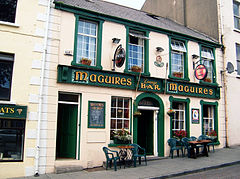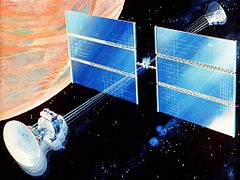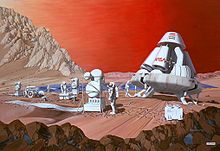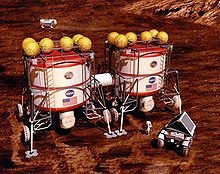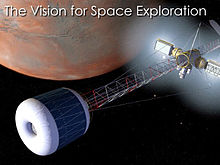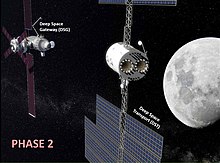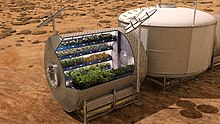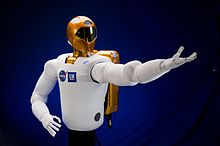The culture of Ireland includes customs and traditions, language, music, art, literature, folklore, cuisine and sports associated with Ireland and the Irish people. For most of its recorded history, Ireland's culture has been primarily Gaelic (see Gaelic Ireland). It has also been influenced by Anglo-Norman, English and Scottish culture. The Anglo-Normans invaded Ireland in the 12th century, while the 16th/17th century conquest and colonization of Ireland saw the emergence of the Anglo-Irish and Scots-Irish (or Ulster Scots). Today, there are often notable cultural differences between those of Catholic and Protestant (especially Ulster Protestant) background, and between travellers and the settled population.
Due to large-scale emigration from Ireland, Irish culture has a global reach and festivals such as Saint Patrick's Day and Halloween are celebrated all over the world. Irish culture has to some degree been inherited and modified by the Irish diaspora, which in turn has influenced the home country.
Though there are many unique aspects of Irish culture, it shares substantial traits with those of Britain, other English-speaking countries, other predominantly Catholic European countries, and the other Celtic nations.
Farming and rural tradition
Lough Gur, an early Irish farming settlement
As archaeological evidence from sites such as the Céide Fields in County Mayo and Lough Gur in County Limerick demonstrates, the farm in Ireland is an activity that goes back to the Neolithic, about 6,000 years ago. Before this, the first settlers of the island of Ireland after the last Ice Age were a new wave of cavemen and the Mesolithic period. In historic times, texts such as the Táin Bó Cúailinge show a society in which cows were represented a primary source of wealth and status. Little of this had changed by the time of the Norman invasion of Ireland in the 12th century. Giraldus Cambrensis portrayed a Gaelic society in which cattle farming and transhumance was the norm.
Townlands, villages, parishes and counties
The Normans replaced traditional clan land management (Brehon Law) with the manorial system of land tenure and social organisation. This led to the imposition of the village, parish and county over the native system of townlands. In general, a parish was a civil and religious unit with a manor, a village and a church at its centre. Each parish incorporated one or more existing townlands into its boundaries. With the gradual extension of English feudalism over the island, the Irish county structure came into existence and was completed in 1610.These structures are still of vital importance in the daily life of Irish communities. Apart from the religious significance of the parish, most rural postal addresses consist of house and townland names. The village and parish are key focal points around which sporting rivalries and other forms of local identity are built and most people feel a strong sense of loyalty to their native county, a loyalty which also often has its clearest expression on the sports field.
Land ownership and land hunger
Traditional Irish cottage in Co. Antrim
Modern Irish home in Co. Donegal
With the Elizabethan English conquest, the Cromwellian conquest of Ireland, and the organised plantations of English and Scottish settlers, the patterns of land ownership in Ireland were altered greatly. The old order of transhumance and open range cattle breeding died out to be replaced by a structure of great landed estates, small tenant farmers with more or less precarious hold on their leases, and a mass of landless labourers. This situation continued up to the end of the 19th century, when the agitation of the Land League began to bring about land reform. In this process of reform, the former tenants and labourers became land owners, with the great estates being broken up into small- and medium-sized farms and smallholdings. The process continued well into the 20th century with the work of the Irish Land Commission. This contrasted with Britain, where many of the big estates were left intact. One consequence of this is the widely recognised cultural phenomenon of "land hunger" amongst the new class of Irish farmer. In general, this means that farming families will do almost anything to retain land ownership within the family unit, with the greatest ambition possible being the acquisition of additional land. Another is that hillwalkers in Ireland today are more constrained than their counterparts in Britain, as it is more difficult to agree rights of way with so many small farmers involved on a given route, rather than with just one landowner.
Holidays and festivals
St. Patrick's Day parade in Dublin
The majority of the Irish calendar today still reflects the old pagan customs, with later Christian traditions also having significant influences. Christmas in Ireland has several local traditions, some in no way connected with Christianity. On 26 December (St. Stephen's Day), there is a custom of "Wrenboys" who call door to door with an arrangement of assorted material (which changes in different localities) to represent a dead wren "caught in the furze", as their rhyme goes.
The national holiday in the Republic of Ireland is Saint Patrick's Day, that falls on the date 17 March and is marked by parades and festivals in cities and towns across the island of Ireland, and by the Irish diaspora around the world. The festival is in remembrance to Saint Patrick, the patron saint of Ireland. Pious legend credits Patrick with the banishing of the snakes from the island, and the legend also credits Patrick with teaching the Irish about the concept of the Trinity by showing people the shamrock, a 3-leaved clover, using it to highlight the Christian belief of 'three divine persons in the one God'.
In Northern Ireland on The Twelfth of July, commemorates William III's victory at the Battle of the Boyne is a public holiday. The holiday is celebrated by Irish Protestants the vast majority of whom live in Northern Ireland and is notable for the numerous parades organised by the Orange Order which take place throughout Northern Ireland. These parades are colourful affairs with Orange Banners and sashes on display and include music in the form of traditional songs such as The Sash and Derry's Walls performed by a mixture of Pipe, Flute, Accordion, and Brass marching bands.
Brigid's Day (1 February, known as Imbolc or Candlemas) also does not have its origins in Christianity, being instead another religious observance superimposed at the beginning of spring. The Brigid's cross made from rushes represents a pre-Christian solar wheel.
Other pre-Christian festivals, whose names survive as Irish month names, are Bealtaine (May), Lúnasa (August) and Samhain (November). The last is still widely observed as Halloween which is celebrated all over the world, including in the United States followed by All Saints' Day, another Christian holiday associated with a traditional one. Important church holidays include Easter, and various Marian observances.
Religion
The ruins of the ancient monastery at Clonmacnoise, County Offaly
Christianity in the form of both Roman Catholicism and Protestantism is the most widely practiced religion in Ireland. Christianity was brought to Ireland during or prior to the 5th century and its early history among the Irish is in particular associated with Saint Patrick, who is generally considered Ireland's patron saint. The Celtic festival of Samhain, known as Halloween, originated in Ireland and is now celebrated all over the world.
Ireland is a place where religion and religious practice have always been held in high esteem. The majority of people on the island are Roman Catholics; however, there is a significant minority of Protestants who are mostly concentrated in Northern Ireland, where they make up a plurality of the population. The three main Protestant denominations on the island are the Church of Ireland, the Presbyterian Church in Ireland and the Methodist Church in Ireland. These are also joined by numerous other smaller denominations including Baptists, several American gospel groups and the Salvation Army. As well as these Protestant Churches, other minority denominations include Eastern Orthodox, Jehovah's Witnesses and The Church of Jesus Christ of Latter Day Saints (LDS). In addition to the Christian denominations there are centres for Buddhists, Hindus, Bahais, Pagans and for people of the Islamic and Jewish faiths.
In the Republic of Ireland, the last time a census asked people to specify their religion was in 2011. The result was 84.16% Roman Catholic, 2.81% Church of Ireland (Anglican), 1.07% Islam, 0.54% Presbyterian, 0.9% Christian, 0.99% Orthodox, approximately 2.07% other religious groupings and 5.88% identified as having no religion. About 1.59% did not state their religious identity. Amongst the Republic's Roman Catholics, weekly church attendance dropped from 87% in 1981 to 60% in 1998, though this remained one of the highest attendance rates in Europe.
In Northern Ireland in 2011, the population was 40.8% Roman Catholic, 19.1% Presbyterian, 13.7% Church of Ireland (Anglican), 3% Methodist, 5.8% other Christian, 0.8% other religion and philosophy, 10.1% with no religion and 6.8% religion not stated.
Folklore
Modern depiction of a Leprechaun
The Leprechaun has been estimated to figure to a large degree in Irish folklore. According to the tales, the leprechaun is a mischievous fairy type creature in emerald green clothing who when not playing tricks spend all their time busily making shoes, the Leprechaun is said to have a pot of gold hidden at the end of the rainbow, and if ever captured by a human it has the magical power to grant three wishes in exchange for release. More acknowledged and respected in Ireland are the stories of Fionn mac Cumhaill and his followers, the Fianna, form the Fenian cycle. Legend has it he built the Giant's Causeway as stepping-stones to Scotland, so as not to get his feet wet; he also once scooped up part of Ireland to fling it at a rival, but it missed and landed in the Irish Sea — the clump became the Isle of Man and the pebble became Rockall, the void became Lough Neagh. The Irish king Brian Boru who ended the domination of the so-called High Kingship of Ireland by the Uí Néill, is part of the historical cycle. The Irish princess Iseult is the adulterous lover of Tristan in the Arthurian romance and tragedy Tristan and Iseult. The many legends of ancient Ireland were captured by Lady Gregory in two volumes with forwards by W.B. Yeats. These stories depict the unusual power and status that Celtic women held in ancient times.
A traditional Irish Halloween turnip lantern
Halloween is a traditional and much celebrated holiday in Ireland on the night of 31 October. The name Halloween is first attested in the 16th century as a Scottish shortening of the fuller All-Hallows-Eve, and according to some historians it has its roots in the gaelic festival Samhain, where the Gaels believed the border between this world and the otherworld became thin, and the dead would revisit the mortal world.
In Ireland, traditional Halloween customs include; Guising — children disguised in costume going from door to door requesting food or coins – which became practice by the late 19th century, turnips hollowed-out and carved with faces to make lanterns, holding parties where games such as apple bobbing are played. Other practices in Ireland include lighting bonfires, and having firework displays. Mass transatlantic Irish and Scottish immigration in the 19th century popularised Halloween in North America.
Literature and the arts
Irish dancers in Irish dancing costumes, which often feature lace or an embroidered pattern copied from the medieval Irish Book of Kells.
Irish traditional music sessions usually take place in public houses.
The early history of Irish visual art is generally considered to begin with early carvings found at sites such as Newgrange and is traced through Bronze age artefacts, particularly ornamental gold objects, and the Celtic brooches and illuminated manuscripts of the "Insular" Early Medieval period. During the course of the 19th and 20th centuries, a strong indigenous tradition of painting emerged, including such figures as John Butler Yeats, William Orpen, Jack Yeats and Louis le Brocquy.
The Irish tradition of folk music and dance is also widely known. In the middle years of the 20th century, as Irish society was attempting to modernise, traditional Irish music fell out of favour to some extent, especially in urban areas. Young people at this time tended to look to Britain and, particularly, the United States as models of progress and jazz and rock and roll became extremely popular. During the 1960s, and inspired by the American folk music movement, there was a revival of interest in the Irish tradition. This revival was inspired by groups like The Dubliners, the Clancy Brothers and Sweeney's Men and individuals like Seán Ó Riada. The annual Fleadh Cheoil na hÉireann is the largest festival of Irish music in Ireland.
Before long, groups and musicians like Horslips, Van Morrison and even Thin Lizzy were incorporating elements of traditional music into a rock idiom to form a unique new sound. During the 1970s and 1980s, the distinction between traditional and rock musicians became blurred, with many individuals regularly crossing over between these styles of playing as a matter of course. This trend can be seen more recently in the work of bands like U2, Snow Patrol, The Cranberries, The Undertones and The Corrs.
Languages
An Irish-language information sign in the Gaeltacht
Irish and English are the most widely spoken languages in Ireland. English is the most widely spoken language on the island overall, and Irish is spoken as a first language only by a small minority, primarily, though not exclusively, in the government-defined Gaeltacht regions in the Republic. A larger minority speak Irish as a second language, with 40.6% of people in the Republic of Ireland claiming some ability to speak the language in the 2011 census. Article 8 of the Constitution of Ireland states that Irish is the national and first official language of the Republic of Ireland. English in turn is recognised as the State's second official language. Hiberno-English, the dialect of English spoken in most of the Republic of Ireland, has been greatly influenced by Irish.
In contrast Northern Ireland, like the rest of the United Kingdom, has no official language. English, however, is the de facto official language. In addition, Irish and Ulster Scots have recognition under the European Charter for Regional or Minority Languages, with 8.1% claiming some ability in Ulster Scots and 10.7% in Irish. In addition, the dialect and accent of the people of Northern Ireland is noticeably different from that of the majority in the Republic of Ireland, being influenced by Ulster Scots and Northern Ireland's proximity to Scotland.
Several other languages are spoken on the island, including Shelta, a mixture of Irish, Romany and English, spoken widely by Travellers. Two sign languages have also been developed on the island, Northern Irish Sign Language and Irish Sign Language.
Some other languages have entered Ireland with immigrants – for example, Polish is now the second most widely spoken language in Ireland after English, Irish being the third most commonly spoken language.
- Irish Gaelic Language
- Irish Sign Language
- Hiberno-English
- Ulster Scots language
- Mid-Ulster English
- Northern Ireland Sign Language
- Shelta language
Food and drink
Early Ireland
A pint of Guinness
There are many references to food and drink in early Irish literature. Honey seems to have been widely eaten and used in the making of mead. The old stories also contain many references to banquets, although these may well be greatly exaggerated and provide little insight into everyday diet. There are also many references to fulacht fia, which are archaeological sites commonly believed to have once been used for cooking venison. The fulacht fia have holes or troughs in the ground which can be filled with water. Meat can then be cooked by placing hot stones in the trough until the water boils. Many fulach fia sites have been identified across the island of Ireland, and some of them appear to have been in use up to the 17th century.
Excavations at the Viking settlement in the Wood Quay area of Dublin have produced a significant amount of information on the diet of the inhabitants of the town. The main animals eaten were cattle, sheep and pigs, with pigs being the most common. This popularity extended down to modern times in Ireland. Poultry and wild geese as well as fish and shellfish were also common, as were a wide range of native berries and nuts, especially hazel. The seeds of knotgrass and goosefoot were widely present and may have been used to make a porridge.
The Potato in Ireland
Three men digging for potatoes in Ahascragh, Co. Galway (Circa 1900)
The potato would appear to have been introduced into Ireland in the second half of the 16th century, initially as a garden crop. It eventually came to be the main food field crop of the tenant and labouring classes. As a food source, the potato is extremely efficient in terms of energy yielded per unit area of land. The potato is also a good source of many vitamins and minerals, particularly vitamin C (especially when fresh). As a result, the typical 18th- and 19th-century Irish diet of potatoes and buttermilk was a contributing factor in the population explosion that occurred in Ireland at that time. However, due to the political rule of the time, the majority of Irish produce (root crops, cereals and animal produce) was exported to Britain, leaving few strains of potato as the sole food source for the Irish. This, along with the spread of potato blight led to shortages and famine, the most notable instance being the Great Irish Famine (1845–1849), which more or less undid all the growth in population of the previous century. The cause of which is attributed by some to an adherence to laissez faire economic policies by the government which kept food exports at the pre famine level leading to disease, death and emigration.
Modern times
An Irish coffee.
In the 20th century the usual modern selection of foods common to Western cultures has been adopted in Ireland. Both US fast-food culture and continental European dishes have influenced the country, along with other world dishes introduced in a similar fashion to the rest of the Western world. Common meals include pizza, curry, Chinese food, and lately, some west African dishes have been making an appearance. Supermarket shelves now contain ingredients for, among others, traditional, European, American (Mexican/Tex-Mex), Indian, Polish and Chinese dishes.
The proliferation of fast food has led to increasing public health problems including obesity, and one of the highest rates of heart disease in the world. In the Northern Ireland, the Ulster fry has been particularly cited as being a major source for a higher incidence of cardiac problems, quoted as being a "heart attack on a plate". All the ingredients are fried, although more recently the trend is to grill as many of the ingredients as possible. These advertisements however, do not explain the health and vigor of native Irish people while eating their traditional diets high in both fat and meat.
In tandem with these developments, the last quarter of the century saw the emergence of a new Irish cuisine based on traditional ingredients handled in new ways. This cuisine is based on fresh vegetables, fish, especially salmon and trout, oysters and other shellfish, traditional soda bread, the wide range of hand-made cheeses that are now being made across the country, and, of course, the potato. Traditional dishes, such as the Irish stew, Dublin coddle, the Irish breakfast and potato bread, have enjoyed a resurgence. Schools like the Ballymaloe Cookery School have emerged to cater for the associated increased interest in cooking with traditional ingredients.
- Boxty with beef and squash.
- Seafood chowder.
- Cheese and onion crisps.
- Baileys cheesecake.
Pub culture
A typical Irish pub in County Donegal
Pub culture pervades Irish society, across all cultural divides. The term refers to the Irish habit of frequenting public houses (pubs) or bars. Traditional pub culture is concerned with more than just drinking. Typically pubs are important meeting places, where people can gather and meet their neighbours and friends in a relaxed atmosphere; similar to the cafe cultures of other countries. Pubs vary widely according to the clientele they serve, and the area they are in. Best known, and loved amongst tourists is the traditional pub, with its traditional Irish music (or "trad music"), tavern-like warmness, and memorabilia filling it. Often such pubs will also serve food, particularly during the day. Many more modern pubs, not necessarily traditional, still emulate these pubs, only perhaps substituting traditional music for a DJ or non-traditional live music.
Many larger pubs in cities eschew such trappings entirely, opting for loud music, and focusing more on the consumption of drinks, which is not a focus of traditional Irish culture. Such venues are popular "pre-clubbing" locations. "Clubbing" has become a popular phenomenon amongst young people in Ireland during the celtic tiger years. Clubs usually vary in terms of the type of music played, and the target audience. Belfast has a unique underground club scene taking place in settings such as churches, zoos, and crematoriums.The underground scene is mainly orchestrated by DJ Christopher McCafferty .
A significant recent change to pub culture in the Republic of Ireland has been the introduction of a smoking ban, in all workplaces, which includes pubs and restaurants. Ireland was the first country in the world to implement such a ban which was introduced on 29 March 2004. A majority of the population support the ban, including a significant percentage of smokers. Nevertheless, the atmosphere in pubs has changed greatly as a result, and debate continues on whether it has boosted or lowered sales, although this is often blamed on the ever-increasing prices, or whether it is a "good thing" or a "bad thing". A similar ban, under the Smoking (Northern Ireland) Order 2006, came into effect in Northern Ireland on 30 April 2007.
National and international organisations have labelled Ireland as having a problem with over-consumption of alcohol. In the late 1980s alcohol consumption accounted for nearly 25% of all hospital admissions. While this figure has been decreasing steadily, as of 2007, approximately 13% of overall hospital admissions were alcohol related. In 2003, Ireland had the second-highest per capita alcohol consumption in the world, just below Luxembourg at 13.5 litres (per person 15 or more years old), according to the OECD Health Data 2009 survey. According to the latest OECD figures, alcohol consumption in Ireland has dropped from 11.5 litres per adult in 2012 to 10.6 litres per adult in 2013. However, research showed that in 2013, 75% of alcohol was consumed as part of a drinking session where the person drank six or more standard units (which equates to three or more pints of beer). This meets the Health Service Executive's definition of binge drinking.
Sport
Gaelic football
Hurling ball (sliotar) and hurley (camán)
Sport on the island of Ireland is popular and widespread. Throughout the island a wide variety of sports are played, the most popular being Gaelic football, hurling, soccer, rugby union and hockey. Gaelic football is the most popular sport in Ireland in terms of match attendance and community involvement, and represents 34% of total sports attendances at events in the Republic of Ireland and abroad, followed by hurling at 23%, soccer at 16% and rugby at 8%. and the All-Ireland Football Final is the most watched event in Ireland's sporting calendar. Swimming, golf, aerobics, soccer, cycling, Gaelic football and billiards/snooker are the sporting activities with the highest levels of playing participation. Soccer is the most popular sport involving national teams. The success of the Ireland team at the 1990 FIFA World Cup saw 500,000 fans in Dublin to welcome the team home. The team's song "Put 'Em Under Pressure" topped the Irish charts for 13 weeks.
In Ireland many sports, such as rugby union, Gaelic football and hurling, are organised in an all-island basis, with a single team representing the island of Ireland in international competitions. Other sports, such as soccer, have separate organising bodies in Northern Ireland and the Republic of Ireland. Traditionally, those in the North who identify as Irish, predominantly Catholics and nationalists, support the Republic of Ireland team. At the Olympics, a person from Northern Ireland can choose to represent either the Great Britain team or the Ireland team. Also as Northern Ireland is a Home Nation of the United Kingdom it also sends a Northern Ireland Team to the Commonwealth Games every four years.
- Gaelic Athletic Association
- Northern Ireland national football team
- Republic of Ireland national football team
- Irish Rugby Football Union
- Northern Ireland Commonwealth Games Team
- British Olympic Association
- Olympic Council of Ireland
- Community Games
- Irish Derby Stakes
Media
Two types of traditional Irish boats, a currach (above) and a Galway hooker (below)
In the Republic of Ireland there are several daily newspapers, including the Irish Independent, The Irish Examiner, The Irish Times, The Star, The Evening Herald, Daily Ireland, the Irish Sun, and the Irish language Lá Nua. The best selling of these is the Irish Independent, which is published in both tabloid and broadsheet form. The Irish Times is Ireland's newspaper of record.
The Sunday market is quite saturated with many British publications. The leading Sunday newspaper in terms of circulation is The Sunday Independent. Other popular papers include The Sunday Times, The Sunday Tribune, The Sunday Business Post, Ireland on Sunday and the Sunday World.
In Northern Ireland the three main daily newspapers are The News Letter, which is Unionist in outlook, The Irish News, mainly Nationalist in outlook and the Belfast Telegraph. Also widely available are the Northern Irish versions of the main UK wide daily newspapers and some Scottish dailies such as the Daily Record.
In terms of Sunday papers the Belfast Telegraph is the only one of the three main Northern Irish dailies that has a Sunday publication which is called the Sunday Life. Apart from this all the main UK wide Sunday papers such as The Sun on Sunday are widely available as are some Irish papers such as the Sunday world.
There are quite a large number of local weekly newspapers both North and South, with most counties and large towns having two or more newspapers. Curiously Dublin remains one of the few places in Ireland without a major local paper since the Dublin Evening Mail closed down in the 1960s. In 2004 the Dublin Daily was launched, but failed to attract enough readers to make it viable.
One major criticism of the Republic of Ireland newspaper market is the strong position Independent News & Media has on the market. It controls the Evening Herald, Irish Independent, Sunday Independent, Sunday World and The Star as well as holding a large stake in the cable company Chorus, and indirectly controlling The Sunday Tribune. The Independent titles are perceived by many Irish republicans as having a pro-British stance. In parallel to this, the Independent titles are perceived by many opposition supporters as being pro Fianna Fáil
.
The Irish magazine market is one of the world's most competitive, with hundreds of international magazines available in Ireland, ranging from Time and The Economist to Hello! and Reader's Digest. This means that domestic titles find it very hard to retain readership. Among the best-selling Irish magazines are the RTÉ Guide, Ireland's Eye, Irish Tatler, VIP, Phoenix and In Dublin.
Radio
The first known radio transmission In Ireland was a call to arms made from the General Post Office in O'Connell Street during the Easter Rising. The first official radio station on the island was 2BE Belfast, which began broadcasting in 1924. This was followed in 1926 by 2RN Dublin and 6CK Cork in 1927. 2BE Belfast later became BBC Radio Ulster and 2RN Dublin became RTÉ. The first commercial radio station in the Republic, Century Radio, came on air in 1989.During the 1990s and particularly the early 2000s, dozens of local radio stations have gained licences. This has resulted in a fragmentation of the radio broadcast market. This trend is most noticeable in Dublin where there are now 6 private licensed stations in operation.
Television
Different television stations are available depending on whether you are in Northern Ireland or the Republic of Ireland. In Northern Ireland the main terrestrial television stations are the main UK wide channels BBC One, BBC Two, ITV, Channel 4 and Channel 5. Both the BBC and ITV have local regional programing specific to Northern Ireland produced and broadcast through BBC Northern Ireland and UTV.In terms of Satellite-carried channels in Northern Ireland these are the same as for the rest of the United Kingdom including all Sky channels.
In the Republic of Ireland some areas first received signal from BBC Wales and then latter from BBC Northern Ireland when it began broadcasting television programmes in 1959 before RTÉ Television opened in 1961. Today the Republic's main terrestrial channels are RTÉ One, RTÉ Two, TV3 which began broadcasting in 1998 and Teilifís na Gaeilge (TnaG), now called TG4 which started its Irish language service in 1996.
British and satellite-carried international television channels have widespread audiences in the Republic. The BBC and ITV families of channels are available free to air across the Republic and there is widespread availability of the four main UK channels (BBC1, BBC2, ITV1 and Channel Four) but only limited coverage from Five. Sky One, E4, and several hundred satellite channels are widely available. Parts of the Republic can access the UK digital TV system Freeview.
Film
The Republic of Ireland Film industry has grown rapidly in recent years thanks largely to the promotion of the sector by Bord Scannán na hÉireann (The Irish Film Board) and the introduction of generous tax breaks. Some of the most successful Irish films included Intermission (2001), Man About Dog (2004), Michael Collins (1996), Angela's Ashes (1999), My Left Foot (1989), The Crying Game (1992), In the Name of the Father (1994) and The Commitments (1991). The most successful Irish film directors are Kenneth Branagh, Martin McDonagh, Neil Jordan, John Carney, and Jim Sheridan. Irish actors include Richard Harris, Peter O'Toole, Maureen O'Hara, Brenda Fricker, Michael Gambon, Colm Meaney, Gabriel Byrne, Pierce Brosnan, Liam Neeson, Daniel Day-Lewis, Ciarán Hinds, James Nesbitt, Cillian Murphy, Jonathan Rhys Meyers, Saoirse Ronan, Brendan Gleeson, Domhnall Gleeson, Michael Fassbender, Ruth Negga, Jamie Dornan and Colin Farrell.Ireland has also proved a popular location for shooting films with The Quiet Man (1952), Saving Private Ryan (1998), Braveheart (1995), King Arthur (2004) and P.S. I Love You (2007) all being shot in Ireland.
Cultural institutions, organisations and events
The Bord Gáis Energy Theatre, Dublin.
Institute of Education and Celtic Culture, Dingle, County Kerry, Ireland
Ireland is well supplied with museums and art galleries and offers, especially during the summer months, a wide range of cultural events. These range from arts festivals to farming events. The most popular of these are the annual Dublin Saint Patrick's Day Festival which attracts on average 500,000 people and the National Ploughing Championships with an attendance in the region of 400,000. There are also a number of Summer Schools on topics from traditional music to literature and the arts.
Major organisations responsible for funding and promoting Irish culture are:
- Arts Council of Ireland
- Arts Council of Northern Ireland
- Culture Ireland
- Department of Arts, Heritage and the Gaeltacht (Republic of Ireland)
- Department of Culture, Arts and Leisure (Northern Ireland)
- Foras na Gaeilge
Cork Opera House.
Ulster Museum, Belfast.
- List of institutions and organisations
- Abbey Theatre
- Acadamh na hOllscolaíochta Gaeilge
- Ambassador Theatre
- Aosdána
- Arts Council of Ireland
- Art Projects Network
- Chester Beatty Library
- Comhaltas Ceoltóirí Éireann
- Conradh na Gaeilge
- Cork Opera House
- Culture Ireland
- Druid Theatre, Galway
- Dublin Writers Museum
- Gael Linn
- Gaelchultúr
- Gaelic Athletic Association
- Gate Theatre
- Glór na nGael
- Grand Opera House, Belfast
- Hugh Lane Municipal Gallery, Dublin
- Heritage Council
- Irish Architecture Foundation
- Irish Georgian Society
- Ireland Literature Exchange (ILE)
- Irish Museum of Modern Art at the Royal Hospital Kilmainham
- Irish Museums Association
- James Joyce Centre
- Lime Tree Theatre, Limerick
- Macnas, performance arts company, Galway
- National Archives of Ireland
- National Concert Hall
- National Folklore Collection UCD
- National Gallery of Ireland
- National Library of Ireland
- National Museum of Ireland
- National Photographic Archive
- National Transport Museum of Ireland
- National Wax Museum
- Northern Ireland Screen
- National Trust (UK)
- Office of Public Works
- Poetry Ireland
- Royal Dublin Society (RDS)
- Royal Irish Academy
- Royal Irish Academy of Music
- Royal Society of Antiquaries of Ireland
- Royal Ulster Academy of Arts
- SFX City Theatre
- State Heraldic Museum
- Taibhdhearc na Gaillimhe, Irish language theatre, Galway
- Temple Bar Cultural Trust
- The Helix, performing arts centre, Dublin
- The Hunt Museum, Limerick
- The Point Theatre
- Ulster American Folk Park, Omagh
- Ulster Folk and Transport Museum, Co. Down
- Ulster Museum, Belfast
- University Concert Hall, Limerick
- Events
Bloomsday celebrations in Dublin
- All-Ireland Senior Football Championship
- All-Ireland Senior Hurling Championship
- Bealtaine
- Bloomsday
- Bray Jazz Festival
- Kilkenny Cat Laughs Comedy Festival
- City of Derry Jazz and Big Band Festival
- Clifden Arts Festival
- Cork Jazz Festival
- Culture Night
- Dublin Theatre Festival
- Earagail Arts Festival
- Féile na Gealaí
- Fleadh Cheoil
- Galway Arts Festival
- Imbolg
- Liú Lúnasa
- Lúnasa
- National Ploughing Championships
- Oireachtas na Gaeilge
- Pan Celtic Festival
- Puck Fair, Killorglin
- Saint Patrick's Day
- Samhain
- Seachtain na Gaeilge
- St. Patrick's Festival and Skyfest
- Swell Music and Arts Festival[50]
- The Twelfth
- Maiden City Festival
- Harvest Time Blues
- Heritage Week




























